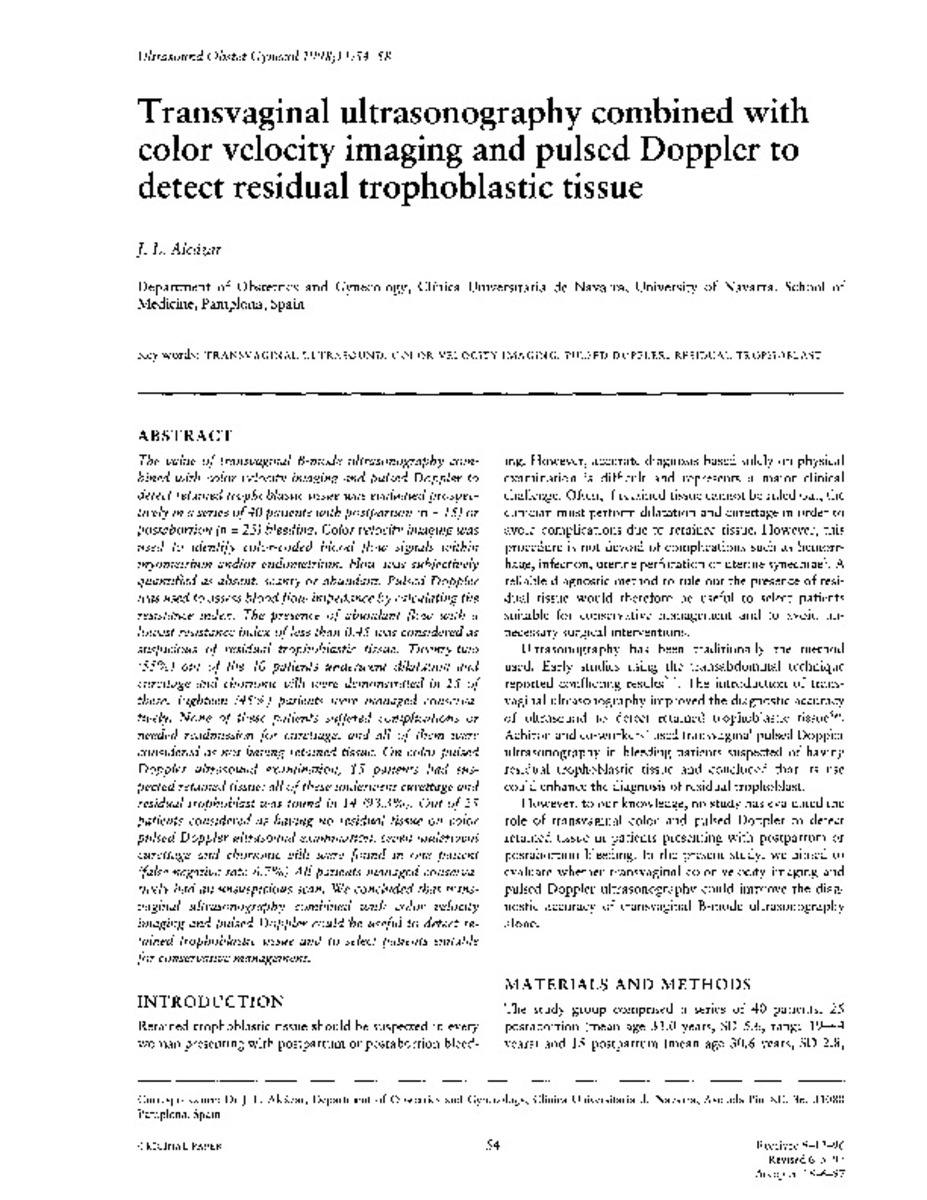Transvaginal ultrasonography combined with color velocity imaging and pulsed Doppler to detect residual trophoblastic tissue
Palabras clave :
Endometrium/blood supply/ultrasonography
Postpartum Hemorrhage/ultrasonography
Blood Flow Velocity
Fecha de publicación :
1998
Editorial :
Wiley-Blackwell
Cita:
Alcazar JL. Transvaginal ultrasonography combined with color velocity imaging and pulsed Doppler to detect residual trophoblastic tissue. Ultrasound Obstet Gynecol 1998 Jan;11(1):54-58.
Aparece en las colecciones:
Estadísticas e impacto
0 citas en

0 citas en

Los ítems de Dadun están protegidos por copyright, con todos los derechos reservados, a menos que se indique lo contrario.







